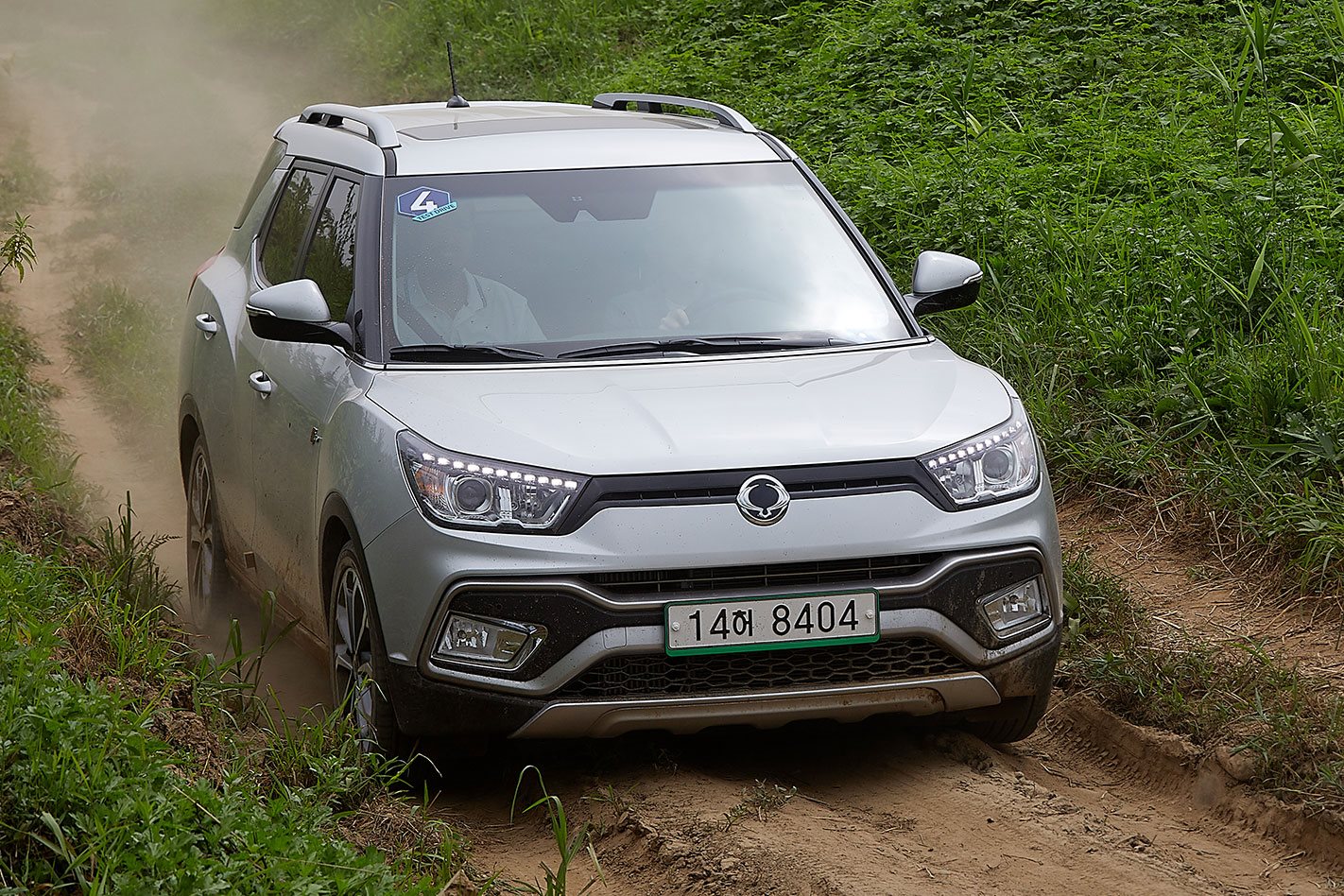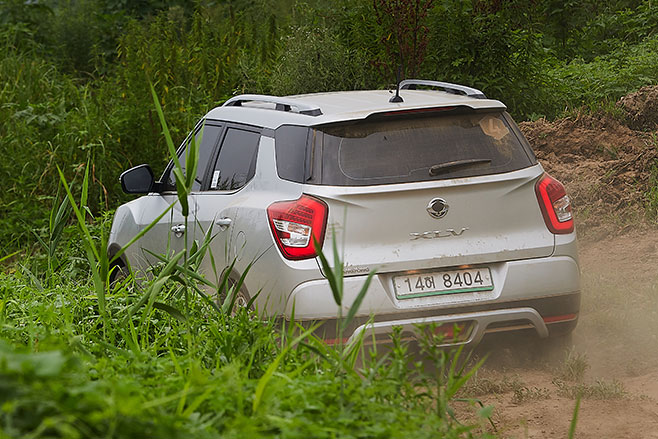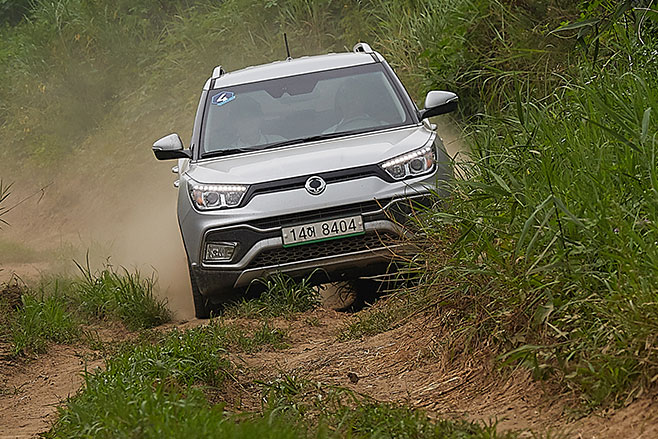
Tell me about this car
After a sales hiatus in Australia, SsangYong is preparing to introduce a fresh line-up of vehicles under factory guidance in November and, in addition to a dual-cab ute and large SUV, the smaller end of the range will include a pair of almost identical high-riders.
The Tivoli is the baby SUV of the range bringing proportions similar to a Kia Sportage, while the XLV is much the same vehicle with the exception of minor exterior details and its extended boot space (up from the Tivoli’s 423 litres to a hefty 720 litres).
If you’re in the market for an affordable small SUV but need a load area that is more typically found in the segment above, the SsangYong XLV might be something to consider.

Strengths
- Genuine off-road ability – With permanent variable four-wheel drive, our test car negotiated a surprisingly gnarly off-road excursion. While its larger siblings have boosted ride height to cope with deep ruts, the lower XLV nevertheless made surprising progress and traction was never an issue. You won’t need to select from different modes because the system automatically shares power between the wheels depending on which have the most grip.
- There aren’t many vehicles in the class that can offer realistic off-road promise and the standard XLV could provide the basis for a special edition that could compete with Jeep’s Compass Trailhawk.
- The XLV’s middle-of-the-road ride height also benefits manners on road and a little blast on Korean country roads revealed a playful chassis despite its all-terrain capability.
- A comfortable ride was another pleasant surprise from the XLV, completing a well-rounded no-compromise performance that will suit a wider range of customers who have different uses for their small SUV.

- Exact kit for Australia is yet to be decided but our test vehicle was decked out with an impressive array of equipment including heated and cooled front seats, heated second-row seats which also recline, 7.0-inch touchscreen, two 12V sockets in the cabin, a USB port and even an HDMI line-in.
- A huge 720-litre boot is class-leading for the segment and expands to 1294 litres with the rear seats folded. The luggage area also contains a 220V power socket alongside a 12V socket.
- Excellent safety features will really stand the little SUV strongly in Australia’s demanding market. The lane keeping assistant is very effective and not as intrusive as some other brands, while AEB, seven airbags, speed sign recognition, automatic high-beam headlights, hill-hold and tyre pressure monitoring are all feathers in the XLV’s cap.
- A broad range of customisation options are likely to be offered including two-tone roof and body colour combinations which look great and add an individual look especially with a wide range of wheel colours and designs, while three high-quality Nappa leather interior options are offered including an eye-catching red with black or more subtle tan and beige.
Weaknesses
- Its name – SsangYong took the curious decision to name two very similar vehicles significantly different names. We can help but feel something along the lines of Tivoli Grand or Tivoli L would retain valuable model linearity.
- While refined and quiet, the 1.6-litre diesel manages just 94kW and 300Nm which feel a little flat when hauling the 1535kg XLV. That might not be a problem however, with a new 1.5-litre turbo petrol likely to join the range as part of an update later in its lifecycle.
- Its generous boot doesn’t have remote power opening, which would complement the more practical load features.

- Interior design is generally inoffensive but there are some curious mismatches such as the red LCD climate panel, full colour central screen and monochrome driver’s information display. A little continuity would tie the cabin together more neatly.
- SsangYong doesn’t have the brand familiarity of many big players in the Australian market and the company is going to have to work hard to gain the trust and recognition, even with a range of vehicles that deserve praise and consideration. That lack of brand equity might affect value when it’s time to sell your XLV.
- Pricing is yet to be announced and could potentially make or break the XLV.

Any rivals I should consider:
At the affordable and of the small SUV market, Hyundai’s Tucson and the Kia Sportage both prove that low cost doesn’t have to equal low quality. With the other South Koreans however, you get one of the best known and respected brands in Australia.
Depending on where SsangYong positions the XLV and Tivoli pricing, MG’s ZS is a Chinese bargain that may have to be factored in, as is the Haval H6 if you are after something larger.




